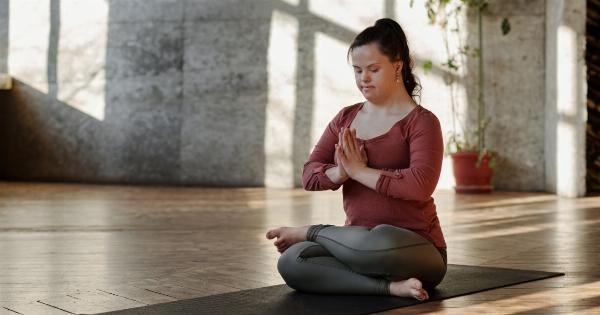Physical intimacy is an essential component of a healthy and thriving marriage. It not only brings couples closer emotionally but also strengthens their bond and fosters a sense of deep connection.
However, the frequency at which married couples engage in physical intimacy can vary greatly from relationship to relationship. Numerous factors come into play when determining how often couples connect physically, including individual preferences, health, age, and external influences.
In this article, we will explore the topic of physical intimacy in marriage and delve into the different factors that can affect its frequency.
The Importance of Physical Intimacy in a Marriage
Physical intimacy goes beyond the act of sex. It encompasses all forms of physical affection, such as hugging, kissing, cuddling, and holding hands.
These acts of affection contribute to a sense of emotional closeness and overall well-being for both partners. They help release feel-good hormones like oxytocin, which strengthen the bond between spouses and promote a sense of security and trust.
Studies have consistently shown that couples who engage in regular physical intimacy report higher levels of marital satisfaction. It serves as a way to communicate love, desire, and affection, fostering a deeper connection between partners.
When couples are physically intimate, it also helps reduce stress, improve sleep quality, and boost overall happiness levels. In short, physical intimacy is a vital aspect of a fulfilling and loving marriage.
Factors Affecting the Frequency of Physical Intimacy
While physical intimacy is crucial for a healthy marriage, the frequency at which couples engage in it can differ from one relationship to another. Several factors influence how often couples connect physically:.
1. Age and Life Stage
Age and life stage play a significant role in determining the frequency of physical intimacy.
Younger couples in the honeymoon phase of their relationship often experience a higher frequency of physical connection due to the intense passion and desire characteristic of new relationships. As couples age and life responsibilities increase, such as starting a family or career demands, physical intimacy’s frequency might decrease. However, many couples find creative ways to maintain physical closeness as their relationship evolves.
2. Health and Well-being
Physical health directly affects a person’s desire and ability to engage in physical intimacy. Individuals dealing with health issues or chronic conditions may find it challenging to connect physically as frequently as they would like.
Similarly, mental and emotional well-being also play a role. Stress, anxiety, and depression can impact a person’s libido and willingness to engage in physical intimacy.
3. Emotional Connection and Communication
Emotional connection and open communication serve as the foundation for a satisfying sex life. Couples who feel emotionally connected are more likely to engage in physical intimacy more frequently.
Effective communication about desires, preferences, and any issues that may arise is vital in maintaining a healthy sex life.
4. Relationship Dynamics and Compatibility
Relationship dynamics and compatibility also influence the frequency of physical intimacy. Couples who share similar sexual desires and preferences tend to have a higher frequency of physical connection.
Mutual understanding, respect, and a willingness to explore and fulfill each other’s needs contribute to a satisfying sex life.
5. Stress and External Factors
High-stress levels, demanding work schedules, and other external factors can impact physical intimacy. When couples are preoccupied with stress or consumed by other commitments, they may have less energy or time to dedicate to physical connection.
It is important for couples to actively prioritize their relationship and create opportunities for physical intimacy within their busy schedules.
6. Individual Libido and Desire
Individual libido and desire levels vary from person to person. It’s common for couples to have different levels of sexual desire, which can affect the frequency of physical intimacy.
Open and non-judgmental communication is crucial in navigating these differences and finding a mutually satisfying balance.
7. Relationship Satisfaction
The overall satisfaction within a marriage can impact the frequency of physical intimacy. Couples who feel satisfied and fulfilled in their relationship are more likely to engage in physical intimacy more frequently.
On the other hand, unresolved conflicts or underlying emotional issues may hinder the desire for physical connection.
8. Routine and Monotony
A monotonous routine can dampen the frequency of physical intimacy. Some couples find themselves stuck in a predictable pattern, which can lead to a decrease in excitement and desire.
It’s important for couples to break free from the routine and explore new ways to keep the spark alive in their physical relationship.
9. External Influences and Cultural Factors
Cultural and societal factors can also influence the frequency of physical intimacy within a marriage.
Traditional beliefs, societal norms, or religious values may shape a couple’s perspective on physical intimacy and impact their willingness to engage in it frequently.
10. Prioritizing Physical Intimacy
Ultimately, the frequency of physical intimacy in a marriage depends on the couple’s ability to prioritize and nurture their physical connection.
It requires effort, communication, and a mutual understanding of each other’s needs and desires. By investing time and energy into their physical relationship, couples can strengthen their emotional bond and enhance their overall marital satisfaction.
The Importance of Open Communication
Open and honest communication is crucial when it comes to discussing physical intimacy in a marriage. Both partners should feel comfortable expressing their desires, concerns, and any issues that may arise.
By maintaining open lines of communication, couples can address potential barriers to physical intimacy and work together to find satisfying solutions.
Conclusion
Physical intimacy plays a significant role in maintaining a thriving and fulfilling marriage. However, the frequency at which couples connect physically can vary widely due to factors such as age, health, emotional connection, and external influences.
It is important for couples to prioritize their physical relationship and actively invest time and effort into maintaining a satisfying and loving connection. By fostering open communication and understanding, couples can find a balance that works for both partners, resulting in a happier and more intimate marriage.



























